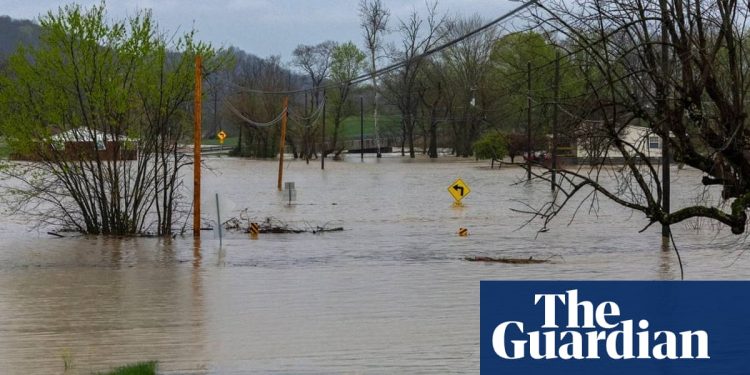Another cycle of torrential rain and sudden floods struck parts of the South and Midwest of the United States on Saturday, already heavily full of serious storm days which also caused fatal tornadoes. Forecastists have warned that rivers in certain places would continue to increase for days.
Day after day, heavy rains has stopped the center of the United States, quickly inflating the sailors and causing a series of Sudden Texas floods in Ohio. The National Weather Service (NWS) said that dozens of locations in several states were to reach a major flood stage, with numerous floods of structures, roads, bridges and other possible critical infrastructures.
At least 16 deaths linked to the weather conditions have been reported since the start of storms, including 10 in Tennessee.
A 57 -year -old man died Friday evening after being released from a car that washed a road in West Plains, Missouri. The floods killed two people in Kentucky – a 9 -year -old boy swept the same day on school, and a 74 -year -old man whose body was found on Saturday inside a fully overwhelmed vehicle in Nelson County, authorities said.
According to the police. No details were immediately provided.
Tornades earlier in the week destroyed entire neighborhoods and caused at least seven dead.
And interstate trade is affected – extreme floods in a corridor that includes the main freight hubs in Louisville, Kentucky and Memphis could lead to delays in expedition and the supply chain, said Jonathan Porter, chief meteorologist at Accuweather.
The explosion comes at a time when almost half of the NWS forecast offices have 20% vacuration rates after Trump’s administrative job cuts – twice that only ten years ago.
The mayor of Louisville, Craig Greenberg, said on Saturday that the Ohio river had increased by five feet (about 1.5 meters) in 24 hours and would continue to swell for days.
“We expect it to be one of the 10 best flooding events in Louisville’s history,” he said.
The emergency warnings of sudden floods and tornado warnings continued to be issued in the Arkansas, Mississippi and Tennessee, with stronger rains and damaging winds in the mixture.
In the North Center of Kentucky, emergency officials ordered a compulsory evacuation for Falmouth, a city of 2,000 inhabitants in a bend of the Licking river. Warnings were similar to the catastrophic floods almost 30 years ago when the river reached a 50 -foot record (15 meters), causing five deaths and 1,000 houses destroyed.
In Arkansas, meteorological managers pleaded with people to avoid traveling, except because of the generalized floods.
BNSF Railway confirmed that a railway bridge at Mammoth Spring had been swept away by flood waters, causing the derailment of several cars. No injury was reported, but there was no immediate estimate at the time when the bridge was reopping.
Since Wednesday, more than one rain (30.5 centimeters) has fallen into certain parts of Kentucky, and more than 8 inches (20 centimeters) in certain parts of Arkansas and Missouri, the forecasters announced on Saturday.
The forecasters have attributed violent time to hot temperatures, an unstable atmosphere, a strong wind shear and an abundant moisture streaming in the Gulf.
According to the National Weather Service, at least two tornadoes observed were noted on Friday evening in Missouri and Arkansas. One, near Blytheville, Arkansas, loft debris of at least 25,000 feet (7.6 km) high, according to the meteorologist at the NWS Chelly Amin. The state emergency management office reported damage in 22 counties of tornadoes, wind, hail and sudden floods.


